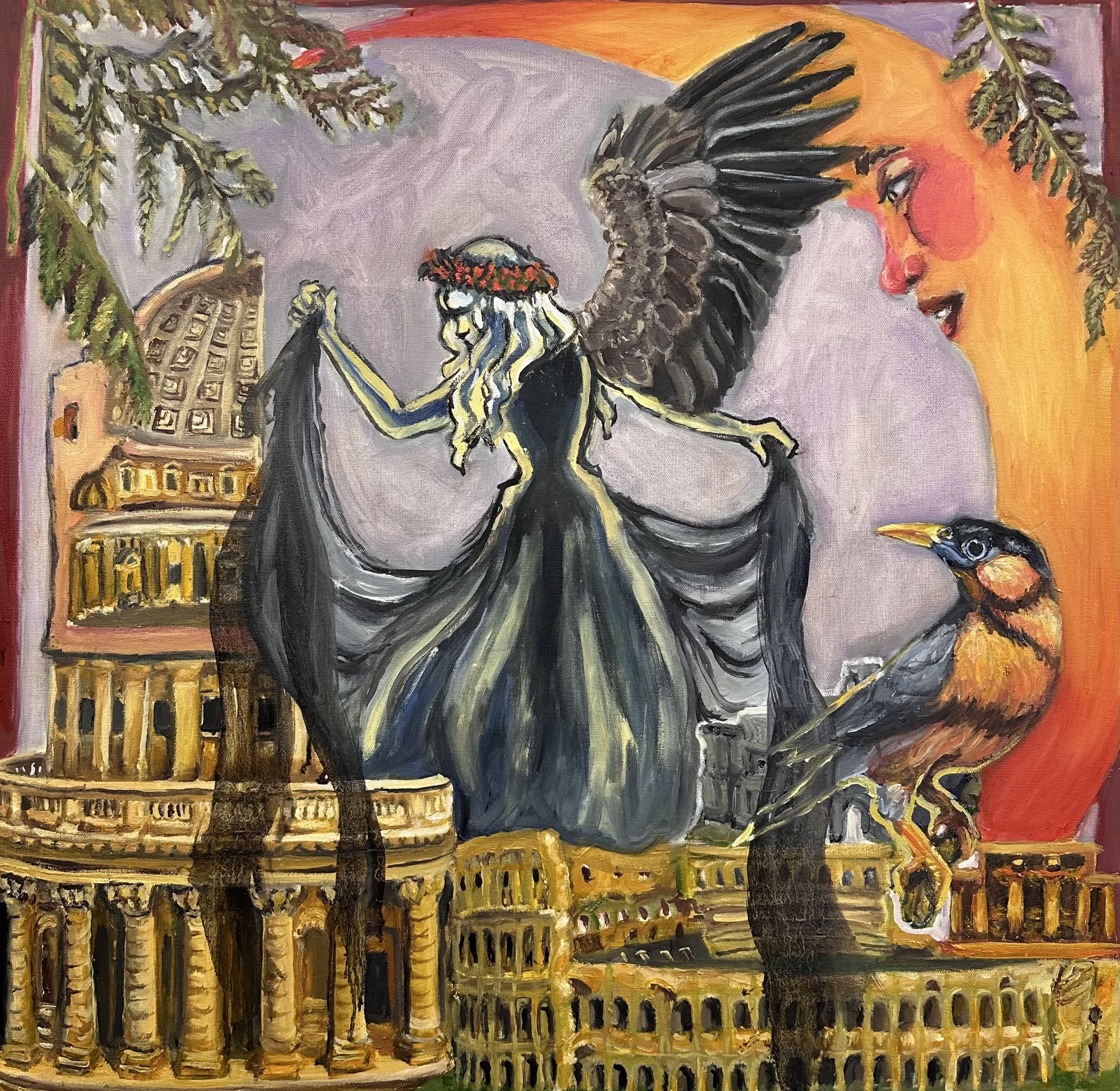
Emma Bryson
The Thrall of Nyx
Cultivated by an upbringing on a small farm in Monticello under the converse but engaged minds of my parents: a doctor and an artist, my creative practice is a synthesis of research and exploration. As a disabled female artist, my work seeks to critique and reclaim tokens of femininity, like craft, often ascribed to oppression. By creating female characters and narratives within realms of mythology, science fiction, and history, I explore a paradox of feminist but male-ascribed ideas. With thorough research and juxtaposition of darker themes with cheerful aesthetics, I aim to investigate and relight the range of emotions often excluding the representation of women in history. Particularly those who were “othered” in religious, heteronormative, able-bodied environments: the Middles Ages, Victorian Era, and 1950s America. These include themes such as feminine rage, abjection of the body into animalism, and reclamation in historical and naturalistic environments.
My mediums are split between drawing and painting. Drawing acts as a visceral method of expression that allows for my mark-making and artistic hand to become its own character on the page with emotions and tenacity. Influenced by writings such as Medea, The Yellow Wallpaper, and Frankenstein, the incorporation of my drawings into collage, sculpture, painting, print, and textiles, is a ubiquitous presence. Painting pushes the envelope of these principles: serving as my tool and medium of rendering. Using acrylic, oil, gouache, and watercolor, I cross-pollinate conventional usage of substrate (canvas or paper), to more unusual ones like thermoplastic, fabric, and clay in a conversation of color and material.
The Thrall of Nyx quantification of this: an oil painting based on a collage of found fabric, dried plant matter, and encyclopedia pages. A marriage of modern and antiquity, the piece is an abstract landscape illustrating the persisting threat of ignorance as it shrouds the past in darkness and reaches for the present. Using the looming figure of the Greek Goddess Nyx with both Roman and Greek architecture, it firmly intersects iconography from ancient Grecian culture with products of the present, like foliage and artificially woven textiles.

